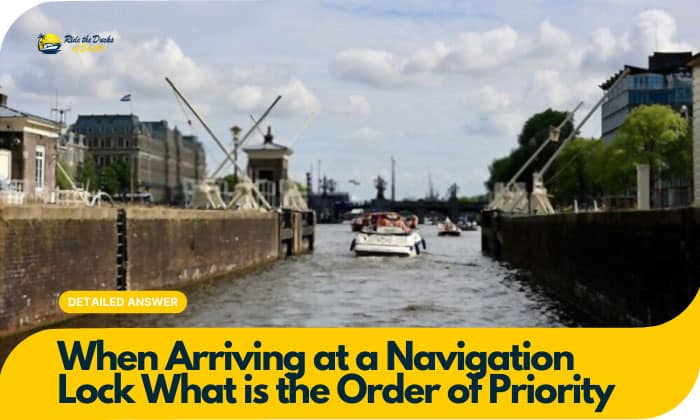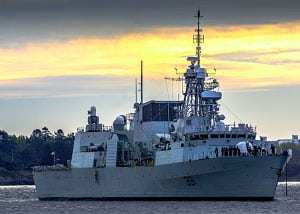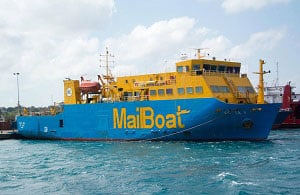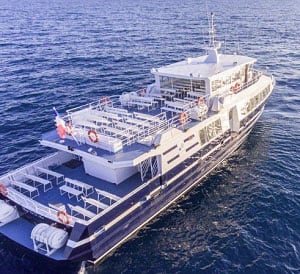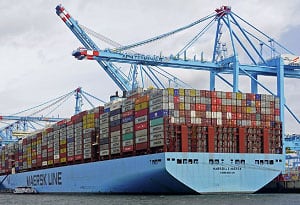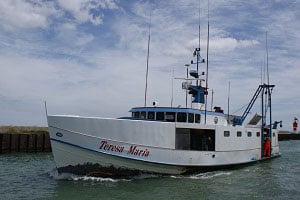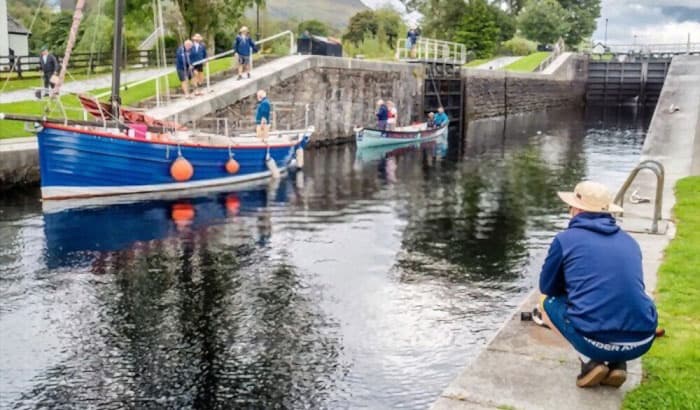We understand why many greenhorn boaters are confused about when arriving at a navigation lock what is the order of priority. If you are piloting a recreational vessel, you can be certain you are last in the pecking order.
Military watercraft take top priority. Next in line are commercial mail boats, commercial passenger vessels, commercial tug or tow boats, and commercial fishing craft. But what if you got to the locks first?
Well, continue reading to learn more.
Class of Boats That Has Priority When Using River Locks
The US is home to some 240 navigation locks spanning 12,000 miles of inland waterways. To put this into perspective, this distance is as long as if you go from the West to the East Coast about four and a half times.
And if we consider the nearly 12 million boats in the country, there is a good chance they will meet in any of these navigation locks. So, remember the following vessels has priority when entering a lock.
1st Priority: Military Vessels
Frigates, destroyers, corvettes, amphibious assault ships, dock landing ships, patrol boats, technical research ships, submarines, and other small to medium-sized military vessels fall under this category. And if the river lock is large and deep enough, it could accommodate an aircraft carrier.
The rule is to let these watercraft through the navigation lock before other types of boats for rivers to avoid hampering military operations.
Hence, you might want to plan your inland waterways adventures very well, and steer clear of rivers and waterways commonly used by military vessels. Otherwise, you might want to be extra patient because the lockmaster will prioritize these ships over yours.
2nd Priority: Commercial Mail Watercraft
Although most folks send mail electronically, physical products still require old-fashioned shipping. Nobody wants to receive their packages or parcels a day late. Studies show two out of three consumers will take their business elsewhere if the retailer reneges on the delivery date.
So, we can understand why the lockmaster will give the green light to a river craft carrying mail, packages, and parcels through the locks before others (after military vessels, of course).
3rd Priority: Commercial Passenger Boats and Ships
Modern riverboats and vintage paddle-wheelers ferry 100 to 200 passengers along the country’s navigable waterways. On the other hand, recreational vessels can only accommodate around ten.
The formula for boat capacity is boat length (in feet) times boat width (in feet) divided by 15. For example, suppose you have a 15-foot-long, 6-foot-wide boat. In that case, you can only accommodate about six passengers, including yourself (15 feet x 6 feet = 90 feet/15 = 6).
Hence, it is understandable the lockmaster will let a passenger vessel pass through the navigation locks before cargo ships, fishing vessels, and recreational boats. After all, like people on buses and trains, boat passengers also need to get to their destinations quickly.
4th Priority: Commercial Cargo, Container, Tanker, and Tows
A lockmaster’s fourth priority is any ship or boat carrying cargo. These watercraft could be tankers and container ships. Although these vessels are nearly similar to Priority 2 watercraft, their cargo “could wait.”
However, they still take precedence over fishing boats and recreational watercraft. You can check a map of navigable rivers of the United States to identify the common inland routes of these vessels and consider them in your plans.
5th Priority: Commercial Fishing Boats
We must recognize this category as different from the average weekend fishing trip you and your buddies engage in. Fish caught by these vessels go to traders and processing plants, converting them into products for mass consumption.
Here is a clue. If you are in the river approaching a lock with another vessel with a commercial purpose, you can expect that watercraft to pass through the lock before you do.
6th Priority: Recreational Boats and Pleasure Vessels
The rule with navigation locks is commercial traffic takes first dibs over recreational watercraft. Hence, you might have to wait for these vessels to lock and move up to the next level before you can get your turn.
The good news is most inland waterways are not as busy as highways and expressways. Meanwhile, you might want to extend your patience a bit longer because the lockmaster might wait for other vessels before locking you through.
FAQs
What do you need to know when passing under a river bridge?
The “clearance board” is the most important information to know. You might also want to reduce your boat’s speed to make spotting this information easier.
It is similar to a “bridge height restriction sign,” informing truckers and other motorists of the maximum allowable vehicle height passing under the bridge.
What is the flashing light that tells you to enter river lock?
Navigation locks have three-color signaling, allowing boat captains to determine when it is safe to pass through the locks and when to stand their ground.
A red flashing light indicates you cannot move yet. Green means you can enter the navigation lock. You must proceed with caution if you see alternating amber and green flashing lights.
So, which light means approach the lock under full control? That would be an amber light.
How does the lock attendant know you want to pass through the lock?
The rule says boaters and ship captains who want to pass through a river lock must sound the horn with three extended blasts.
Alternatively, boaters can contact the lockmaster on VHF Channels 13, 14, or 16. Many navigation locks also feature a small boat signal cord for boaters to notify lock attendants.
Conclusion
Deciphering the issue, “when arriving at a navigation lock what is the order of priority?” is pretty straightforward. You can think of it this way – military, commercial, and personal – in that order.
Of course, “commercial” vessels have different classes. So, you can prioritize according to the boat’s cargo – mail first, passengers second, cargo third, and fish fourth.
Rounding up the pecking order is a must for personal or recreational boat use.

Ten years of enjoying countless trips on boats never made me love them any less! So I am here to put all those experiences into good use for other boaters who want to have a safe and fun trip with their friends and families.

